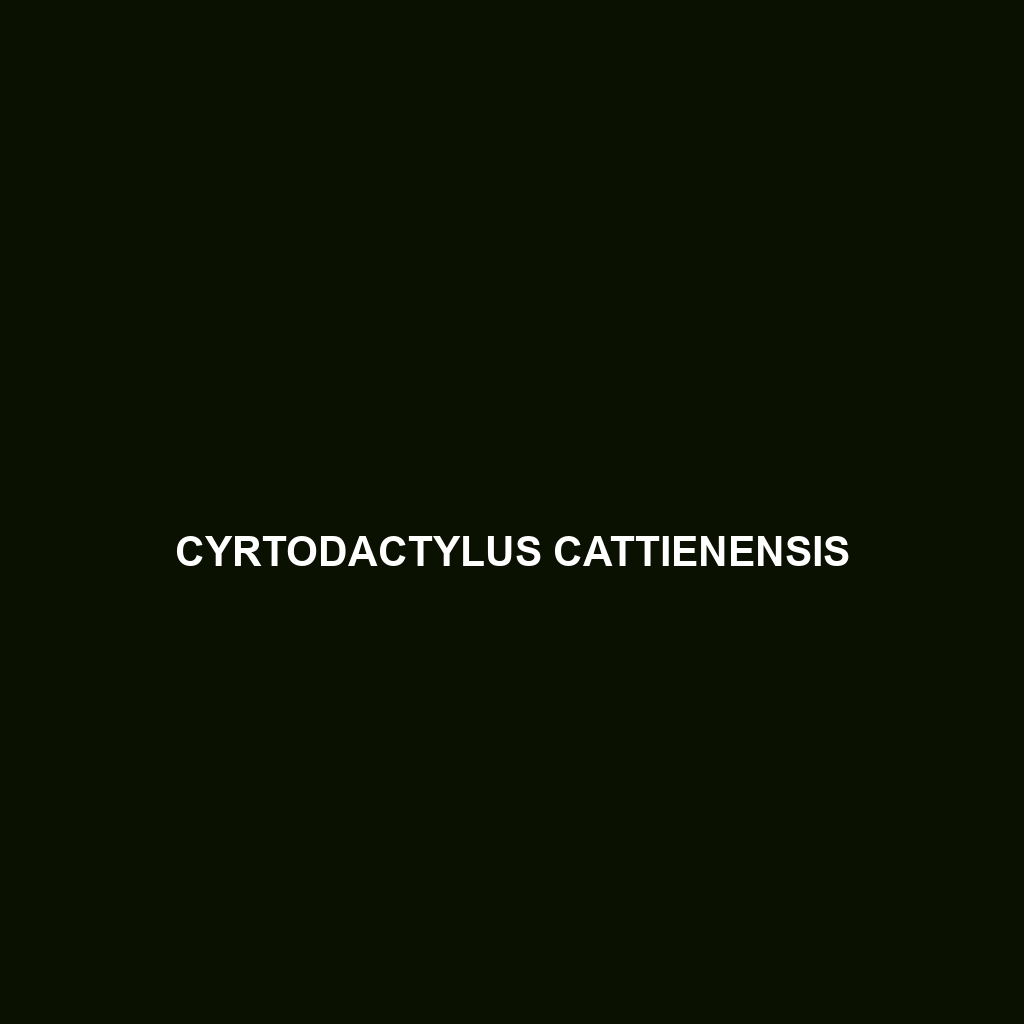Cyrtodactylus cardamomensis Species Description
Common Name: Cyrtodactylus cardamomensis
Scientific Name: Cyrtodactylus cardamomensis
Habitat
Cyrtodactylus cardamomensis is primarily found in the tropical forests of Southeast Asia, particularly in the Cardamom Mountains of Cambodia. This species thrives in humid environments, often residing in areas with dense vegetation and leaf litter at various elevations. The moist, warm climate of this region provides an ideal habitat for this unique gecko.
Physical Characteristics
This small gecko typically measures between 10 to 15 centimeters in length. Cyrtodactylus cardamomensis displays a striking coloration, ranging from light brown to dark olive green, with distinctive darker markings resembling a pattern of spots or stripes. Its flattened body shape and large, bulging eyes are notable features that aid in camouflage among the forest floor debris, making it well-adapted to its environment.
Behavior
Cyrtodactylus cardamomensis is primarily nocturnal, showcasing a range of behaviors that include foraging and basking in shaded areas during the night to avoid predation. This gecko is known for its agility and ability to climb, often residing on trees or rocky surfaces. Its habit of hiding under leaf litter or inside crevices enables it to evade potential threats effectively.
Diet
The diet of Cyrtodactylus cardamomensis primarily consists of insects and other small invertebrates, which they hunt through active foraging. Common food sources include crickets, beetles, and ants. This insectivorous diet is crucial for their growth and reproductive success, as it provides the necessary nutrients for energy and development.
Reproduction
Cyrtodactylus cardamomensis exhibits oviparous reproduction, typically laying eggs during the rainy season, which occurs from May to September. Each clutch generally contains two eggs, which are deposited in concealed locations to protect them from predators. The incubation period lasts approximately 6 to 8 weeks, after which hatchlings emerge, fully formed and ready to fend for themselves.
Conservation Status
Currently, Cyrtodactylus cardamomensis is classified as vulnerable due to habitat loss and degradation caused by deforestation and agricultural expansion in its native range. Conservation efforts are critical to ensuring the survival of this species and maintaining the integrity of its natural habitat.
Interesting Facts
One fascinating aspect of Cyrtodactylus cardamomensis is its unique ability to adapt to varying environmental conditions. This adaptability allows it to occupy a niche in the ecosystem that few other species can fill. Moreover, it is often mistaken for other Cyrtodactylus species due to its similar appearance, making it a subject of interest for herpetologists.
Role in Ecosystem
Cyrtodactylus cardamomensis plays a significant role in its ecosystem as a predator of insects, helping to control their populations. By serving as a food source for larger predators, this gecko is also integral to the food web. Its interactions with other species contribute to the ecological balance within its habitat, highlighting its importance in maintaining biodiversity.
